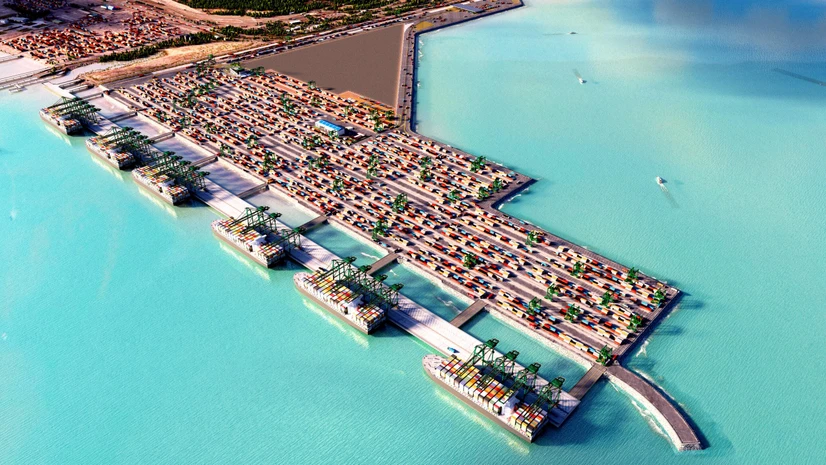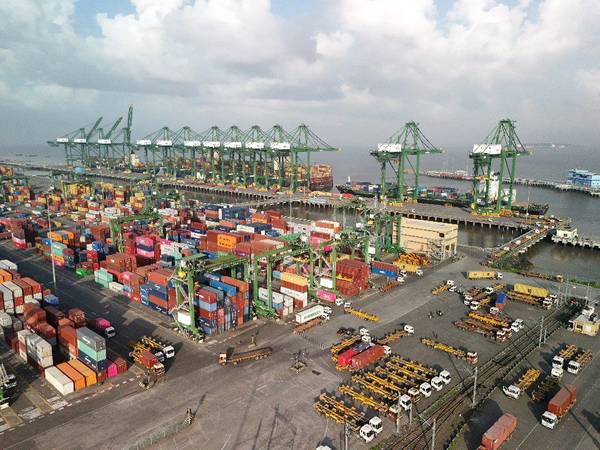India’s logistics sector, which accounts for nearly 14% of GDP, is also changing dramatically. Government-sponsored efforts such as PM Gati Shakti and the National Logistics Policy (NLP) facilitate smooth multimodal logistics solutions that integrate ports, rail networks, roads, and warehouses—infusing visibility and efficiency into logistics processes.
For shipping lines, this transformation is essential. Increasing operating expenses, volatile fuel prices, and rising competitive pressures require better cost management without sacrificing service quality. Terminals like PSA Mumbai and PSA Chennai as well as CFS PSA Ameya provide the infrastructure and connectivity needed to remain competitive.
This blog refers to 5 tested strategies shipping lines can implement to reduce logistics costs without sacrificing operational excellence.
5 Key Ways to Cut Logistics Costs with Multimodal Logistics Solutions in India
1. Optimize Shipping Routes and Port Operations
Shipping companies must reimagine how routes and port contact points influence logistics costs. Route planning and optimal port selection directly affect total charter costs,fuel efficiency, turnaround times, and expenses of inland movements.
- Use High-Efficiency Terminals: PSA Mumbai handled 2.1 million TEUs in 2024, improving operational efficiency with higher berthing rates and automated handling. These advancements result in lower port time , decreased bunker usage and improved on-time performance. The port is expected to reach a 4.8 million TEUs capacity after Phase 2 completion.
- Inland Connectivity Through Rail: PSA Chennai’s direct rail links to inland depots in Hyderabad and Bengaluru now provide a competitive edge. Instead of depending on long-haul trucking, shipping lines can route cargo through DFC-aligned rail corridors, saving up to 28% on inland movement.
- PM Gati Shakti Integration: The National Master Plan overlays more than 400 infrastructure layers, assisting shipping lines in planning cargo movement through integrated port, road, and rail networks. This has already reduced the logistics industry in India costs to 8 – 9% of GDP, with a measurable impact on national efficiency.
2. Consolidate Cargo for Higher Load Efficiency
Consolidating cargo is an essential cost-saving activity through maximal utilization of space and the least container repositioning. This practice helps reduce the volume of empty containers and prevents unnecessary repositioning, which are significant costs for shipping lines.
- Effective Load Planning: Shipping lines in major export terminals such as Mundra and Chennai can consolidate volumes from several customers—particularly small and medium-sized exporters. This minimizes the volume of part loads and prevents empty container repositioning, one of the most considerable below-the-line costs.
- Partner through National Logistics Platforms: India’s National Logistics Exchange Platform facilitates real-time partnerships among carriers, freight forwarders, and shippers. Such mutual visibility has enhanced vessel utilization and helped lines reduce unnecessary voyages.
- Use of Micro-Fulfillment Hubs: Under the NLP covering 500+ micro-fulfilment centres, shipping lines can access aggregated, last-mile-ready cargo nearer the point of origin. This supports cost-efficient container loading at the source, particularly for e-commerce and FMCG products, lowering transportation costs per unit.
3. Secure Cost-Effective Contracts and Pricing Models
Strategic pricing models allow shipping lines to control costs even in unstable markets.
- Volume-Based Agreements: Shipping lines moving consistent volumes can agree to bulk pricing with inland carriers, terminals, and service providers. Long-term agreements result in predictable costs, improved carrier relationships, and enhanced planning.
- Incentivized Service Contracts: Incentive-based contracts are widespread throughout the network of the logistics industry in India. Shipping lines can gain from arrangements where improved performance (such as quicker customs clearance or correct documentation) results in lower charges or value-added incentives.
- Align with Exporters through PLI Schemes: India’s PLI schemes have raised export quantities, particularly electronics, textiles, and pharmaceuticals. Shipping lines can align with big exporters under these schemes for consistent volumes and improved freight margins.
4. Enhance Operational Visibility and Document Turnaround
Visibility and streamlined documentation are critical to averting delays, minimising dwell time, and eliminating compliance penalties.
- Container-Level Tracking: Ports such as PSA Mumbai utilize RFID technology to monitor container movement across yards, gates, and rails. This information enables shipping lines to track bottlenecks, avoid misrouting, and reduce wait times—particularly during transhipment.
- Centralised Port Documentation: The Port Community System (PCS 1x) currently facilitates 100% documentation procedures at all key Indian ports. By making PCS connections at PSA terminals, shipping lines can electronically provide manifests and declarations, track clearance status online in real-time, and preserve electronic records to aid compliance audits. This avoids document errors, speeds turnaround, and diminishes administrative costs by as much as 60%.
- Quicker Yard-to-Gate Transitions: In PSA India terminals, coordinated systems between gate control and yard handling enable containers to transit quickly from ship to rail or truck. This reduces redundancy and enables quicker cargo throughput, saving logistics expenses and eliminating transit penalties.
5. Adopt Sustainable Operating Practices
Sustainability is increasingly linked with cost-effectiveness, regulatory compliance, and international competitiveness.
- Energy-Efficient Port Equipment: PSA India uses electric and hybrid cargo handling equipment to save energy and lower emissions. Shipping companies enjoy faster and cleaner cargo handling, reduced idling, and lower fuel usage at berth.
- Green Cargo Handling Facilities: PSA Ameya’s cold chain facilities feature energy-efficient insulation panels (PIR), digital temperature logging, and solar-supported reefer plug points. These services enable low-emission operations for pharmaceutical and perishable cargo—while minimizing the cost of power consumption.
- Port Waste Management and Recycling: Shipping lines can utilize Maritime Recycling Hubs at Indian ports. They convert ship waste into materials of value, cut waste disposal costs by as much as 50%, and meet environmental standards.
Conclusion
India’s logistics environment is transforming rapidly, and so have the approaches shipping lines employ to remain competitive. Reducing logistics costs now is not just a matter of one-off savings. It involves intelligent routing, effective cargo management, improved contracts, enhanced documentation mechanisms, and thinking sustainably.
Therefore, with PSA India‘s advanced infrastructure and multimodal logistics solutions, shipping lines can achieve cost-effectiveness and reliable service.
As the logistics industry in India evolves, these five strategies will enable shipping companies to expand sustainably, decrease operation waste, and provide value across international trade lanes.
Frequently Asked Questions
1. How to reduce logistics costs in India?
To reduce logistics costs in India, shipping lines should leverage multimodal logistics solutions integrating rail, road, and port services. Strategic port selection, like PSA Mumbai’s rail connectivity and PSA Chennai’s inland access, ensures cost-efficient transportation and quicker transit, effectively reducing costs while improving operational efficiency.
2. How can you reduce cost without sacrificing quality?
Reducing cost without sacrificing quality involves optimizing shipping routes, consolidating cargo for better load efficiency, and enhancing operational visibility. By leveraging PSA’s advanced automation and efficient port operations, shipping lines can reduce downtime, enhance productivity, and manage costs effectively while ensuring on-time delivery and quality service.
3. How can logistics costs be reduced?
Logistics costs can be reduced by selecting the right terminal/port for shipping, optimizing routes, and adopting multimodal logistics strategies. PSA terminals enable seamless rail connectivity, on-terminal CFS, and automated cargo handling, which cuts waiting times, reduces inland transport costs, and boosts overall logistics efficiency, lowering operational expenses.
4. How to reduce your logistics costs with route optimization?
Route optimization reduces logistics costs by improving fuel efficiency and minimizing delays. By choosing rail corridors like PSA Mumbai’s and integrating multimodal transport options, shipping lines can reduce inland transit time enhancing overall operational cost efficiency while maintaining timely delivery of goods.










